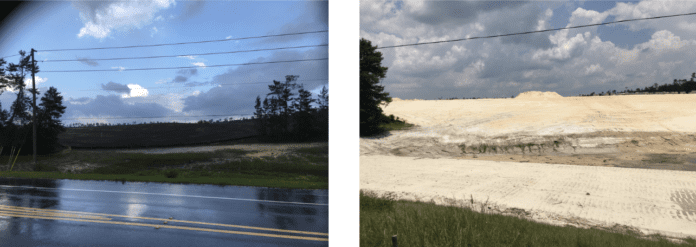
In 2020, 75 percent of Volusia voters chose to tax themselves a few dollars a year to save the last great places of our beautiful county. Owning a home that is valued close to the median home value for the county, I paid $27 of my property taxes last year to the Volusia Forever program.
That’s one Mi Mexico dinner for two I will sacrifice happily to invest in saving the natural systems we all depend on.
Ecosystems are complex assemblies of plants, animals, fungi, bacteria and other microorganisms. But they aren’t just a casserole all thrown together. Ecosystems form over long periods of time. Species come and go, some outcompeting others, and some paving the way for others.
These species don’t just co-exist, they interact in complex relationships that change as new members come and go, and as the physical conditions (rainfall, temperature, light) change daily, seasonally, and over the years.
Those relationships become links in the processes that make the ecosystem a living system: the pulsing transfers of water, carbon, nutrients and energy among the living and nonliving parts.
Intact, natural ecosystems are worth saving because it’s really hard for humans to re-create them from scratch. We can try, and we do, but our version of “restored” or “reclaimed” habitat is never what it was before.
Our state forest staff and our county land-management team do an amazing job of managing our natural ecosystems to protect biodiversity and ecosystem functions, but rarely are they starting from a blank slate.
I sat in on a recent Volusia Forever Advisory Committee meeting as the committee reviewed the eligibility criteria for a second wave of proposals, most of which described special lands that the county could purchase for protection.
But some of the proposals were for parcels that had been highly modified for agriculture or industry, which would require quite a bit of active restoration to return to a “natural” habitat. And one of these was literally a 40-foot hole in the ground.
Really?
I won’t go into the backstory; The Beacon has covered the proposed scheme to pump polluted stormwater and reclaimed water into a borrow pit next to Blue Spring, to artificially stimulate higher flow levels at the spring. The purpose of doing this would not just be to protect manatees, but to lasso a little more wiggle room in the west-side cities’ consumptive-use permits, which specify how much groundwater they can draw (translation: to allow them to approve more housing developments).
But at this meeting, they were coming for Volusia Forever dollars to fund this scheme to “re-create” a complex ecosystem in this 40-foot-deep borrow pit by laying out some “biofilter,” throwing a few wetland plants on top of it, and calling it a “recharge wetland.”
First, federal and state laws assign the responsibility of reclamation to the corporation that mined the site (and made the profits). It is not a taxpayer responsibility to clean up their mess.
Second, what is being proposed is not an “ecosystem.” It is an engineered biofilter that they hope has 100-percent efficacy in removing nutrients from the water before it migrates a few hundred feet west to the spring.
The risk of even 1 percent of those nutrients slipping through and adding pollution to Blue Spring is a risk this county and Orange City cannot bear. Blue Spring is too important ecologically and economically to our west-side quality of life to let it turn green.
So, kudos to the Volusia Forever Advisory Committee, whose members unanimously voted no on this project, affirming that such “restoration projects” are not what the residents of Volusia County voted for when they reinstated Volusia Forever for another 20 years.
Our individually small, but collectively significant contributions to conservation are supposed to represent the ounce of prevention, not the pound of cure. Voters want to save the last great places, not restore degraded sites.
And one final thought: Wouldn’t it be nice if the staff and elected officials of Volusia County’s city and county governments would hold developers to the principle that leaving some existing trees and other green space is so much better than scraping it all clear and covering it in a carpet of St. Augustine grass, with a couple of holes punctured through for 3-inch-diameter trees? This principle would retain so much more diversity and ecosystem function.
— Anderson is a professor of environmental science and studies at Stetson University, and chair of the Volusia Soil and Water Conservation District Board of Supervisors.
Excellent points!
The blatant disregard for leaving naturally occurring trees and other vegetation as integral in new development sites has been historically obvious to those of us paying attention to West Volusia housing projects sites . As an off and on resident of the area and a past county environmental educator and city tree specialist ( once ) I feel I have been paying attention since 1977 at least and have noticed very little change to this practice . I admit to being a “ country boy “ at heart and prefer the wilder places , but I see no reason why more attention to nature near the city cannot be included . Our children and grandchildren deserve it and our overall sense of connection to nature is necessary for healthy living .